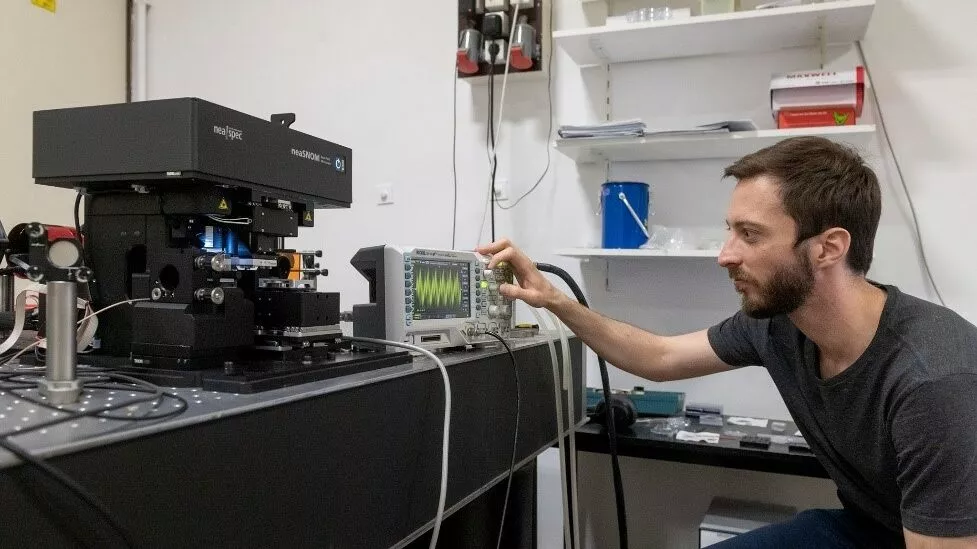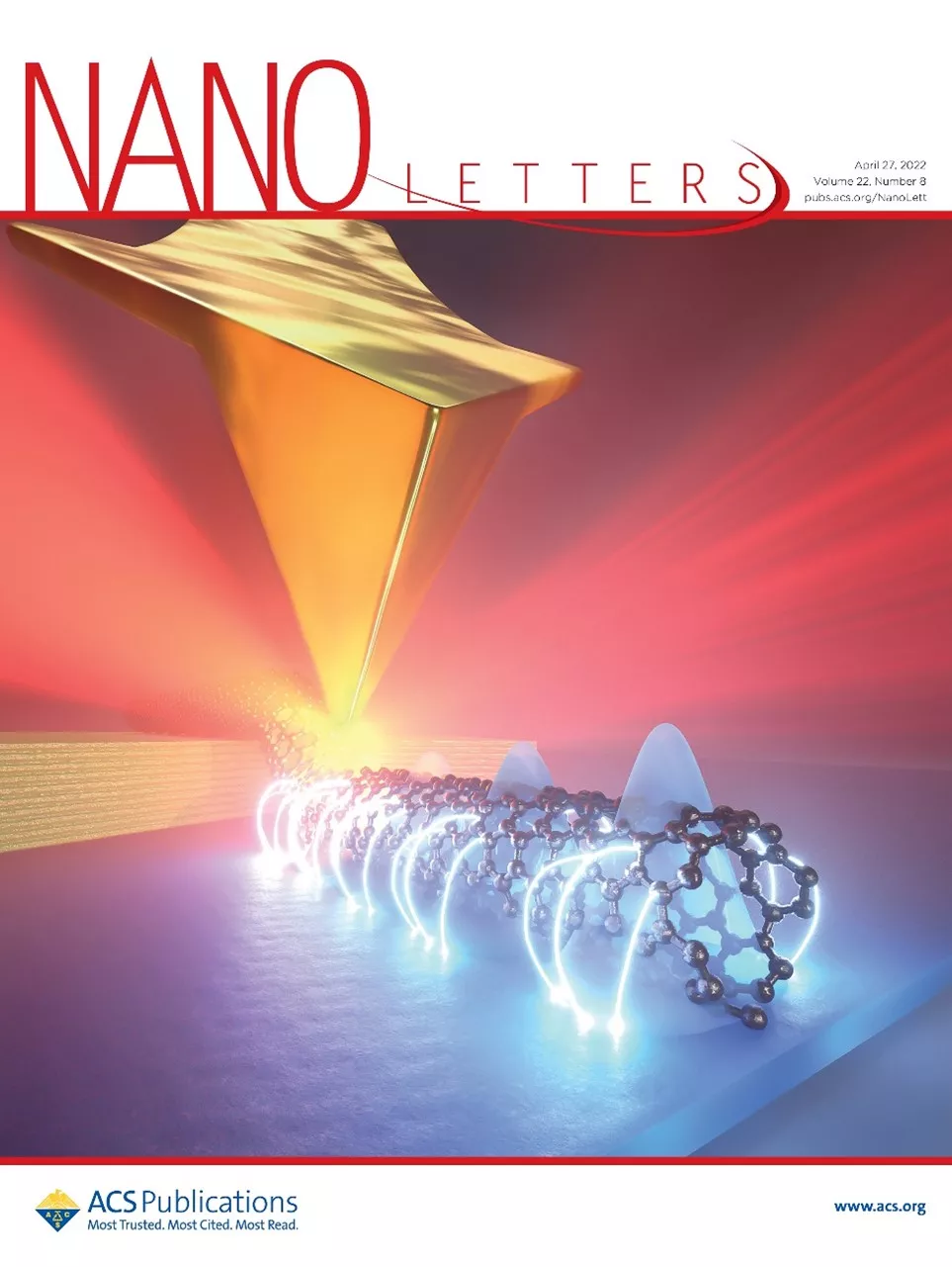The ‘Spectroscopy of Carbon Nanostructures’ research group of the ELKH Wigner Research Centre for Physics (Wigner RCP), which is led by Academician Katalin Kamarás together with Japanese and French partners, has demonstrated ultra-strong light-matter interaction on the sub-nanometre scale, which could contribute to the development of new nanoelectronic devices and ultra-sensitive detectors. The paper presenting the results was published in the April 2022 issue of the leading scientific journal Nano Letters, which also features an illustration of this important effect on its cover.
Single-walled carbon nanotubes are cylindrical, elongated molecules with a wall thickness of just one carbon atom, which have been intensively studied since their discovery in 1991. Because of their special optical and electrical properties, they can be – and are – used in a wide range of applications, from composite materials to biomarkers and ultra-fast transistors.
The researchers induced travelling electron waves, or plasmons, in individual carbon nanotubes and then studied the interaction of these quasiparticles with vibrations in the material that carries the nanotubes. Because the diameter of an individual nanotube is only a hundred thousandth of the diameter of the average hair, the researchers used a method called near-field microscopy. In the infrared range of light, this is the only method that is suitable for studying such small objects. The studies carried out so far have thus succeeded in detecting another special effect that could further expand the possibilities for future technological applications of nanotubes.

Gergely Németh, a researcher at Wigner RCP and the lead author of the study, and his colleagues have shown that the resulting electromagnetic interaction is so strong that new hybrid plasmon-electron resonance (light-electron resonance) states are created, which differ greatly in energy and properties from their initial states. Quantifying the effect, it was found to fall into the category of so-called ultra-strong coupling. Creating this phenomenon is one of the newest and most active branches of fundamental nanophotonics research. An outstanding result is that the interaction has been demonstrated in a very small volume and in the infrared range, which has been achieved with few other materials.
Among the many possible applications of ultrafast coupling, Hungarian researchers are most interested in the molecular spectroscopic application of the phenomenon. Because of their hollow nature, nanotubes can act as ‘nanotanks’ capable of holding small molecules. The strong electromagnetic field generated inside the tubes significantly increases the sensitivity of detecting these molecules, down to the level of single molecule identification. The discovery could also open up new possibilities for modifying chemical reactions or creating ultra-fast plasmonic circuits.
